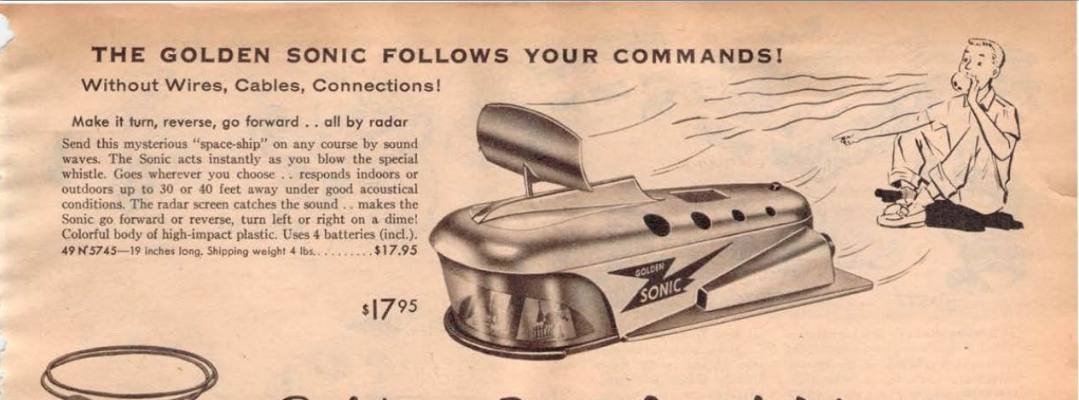
OK, they took a few liberties in advertising back then. This cost $17.95 which was very expensive at the time (a complete Lionel train set cost $19.99). The Lionel train set plugged into the wall using free electricity (kid economics). Golden Sonic used 4 batteries (more than two weeks' allowance) and would only run for an hour or so before depleting the costly cells.
Turn it on and the toy will immediately move in the direction pointed to by the antenna. Blow the whistle and the antenna will rotate (toy stays in place) while the whistle is active. Stop the whistle and the machine will move in the direction indicated by the antenna.
Let's examine what I did.
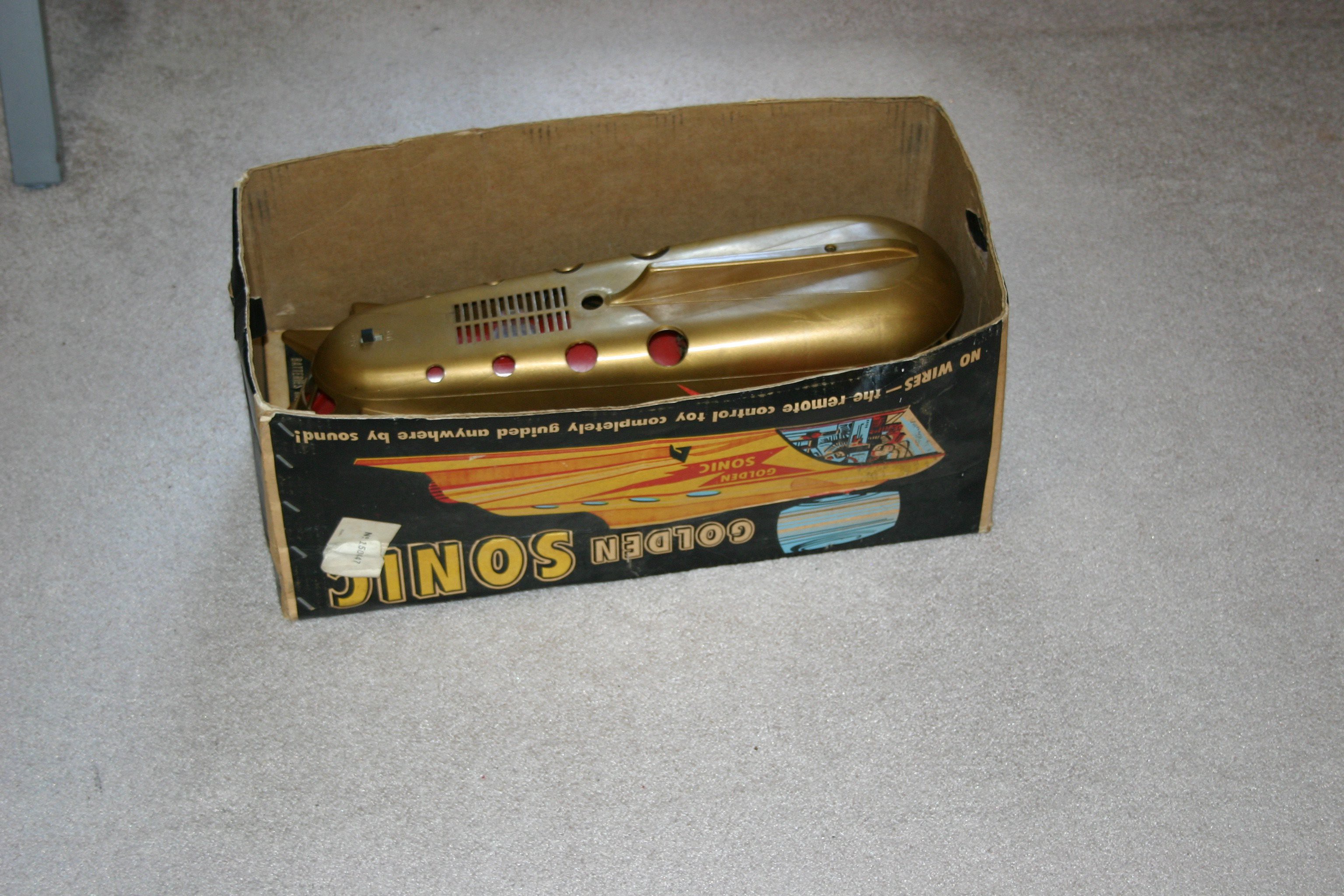
This is what arrived from ebay.

Inside the battery compartment.
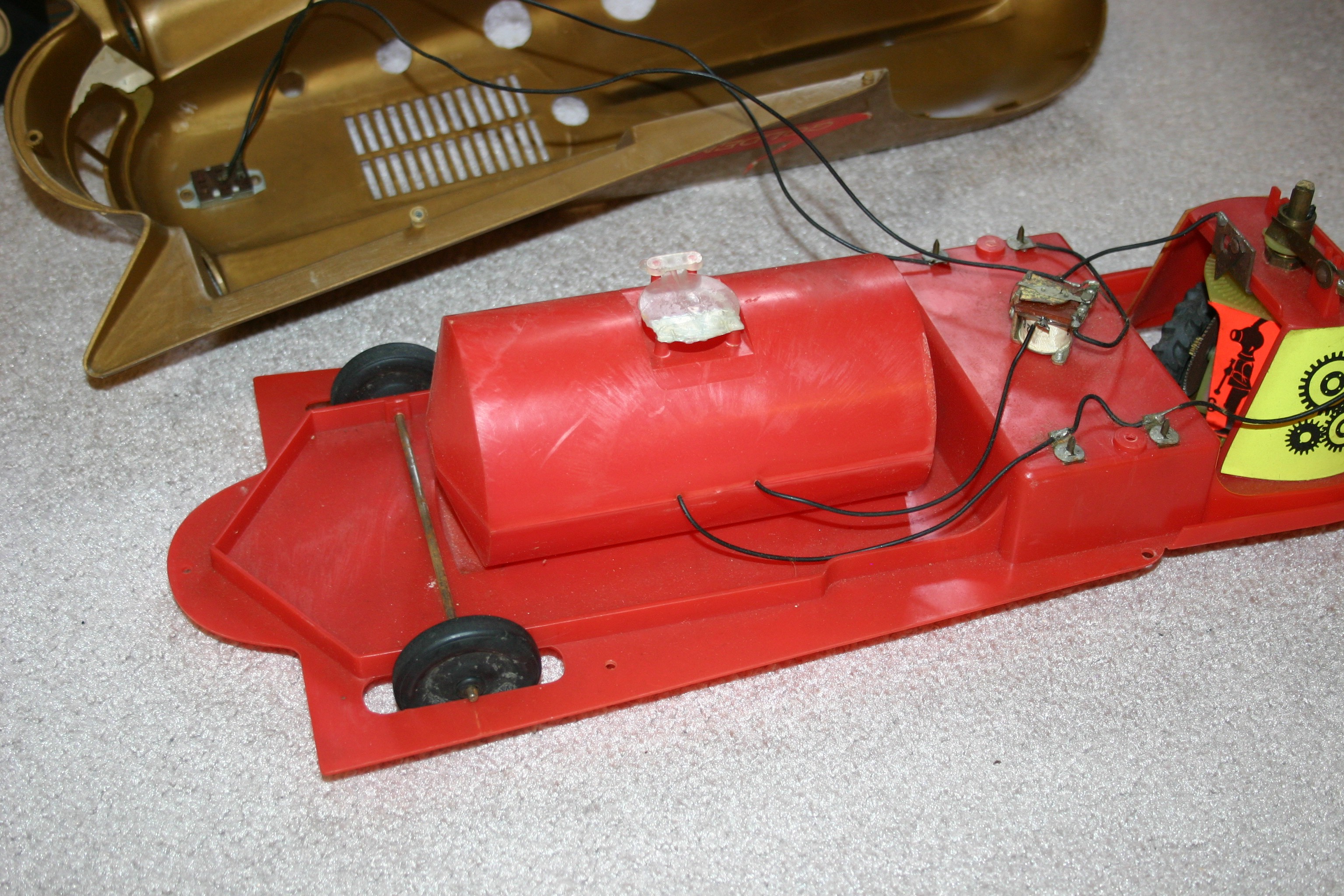
Here I removed the cover.
In operation, when the unit is turned on a relay is energized and the dc motor (powered through slip rings on a bearing that allows for 360 degree operation) moves the toy in the direction pointed to by antenna.
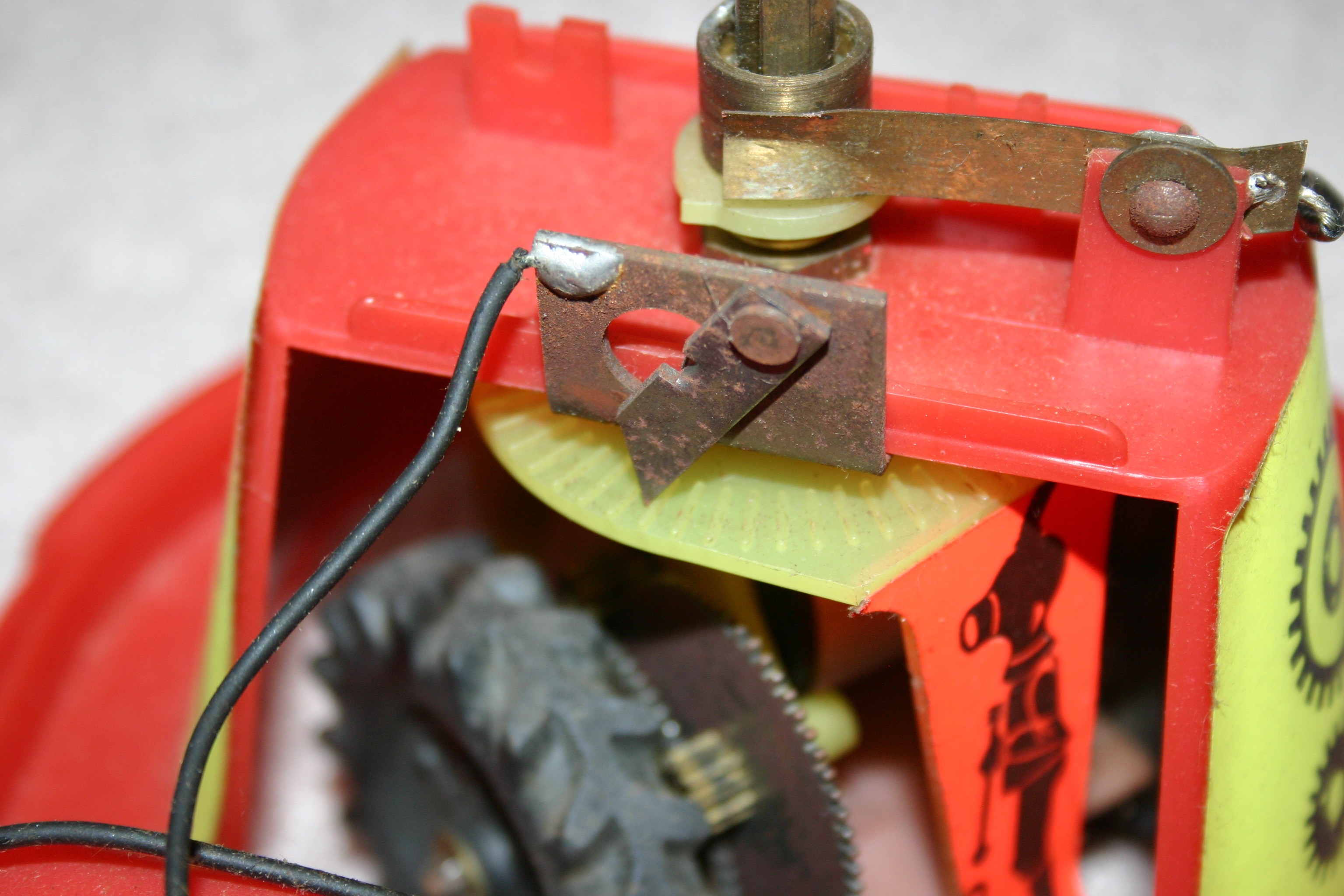
This "razor blade/ridged assembly" prevents the rotating motor carriage from rotating in the counter clockwise direction (which is the tendency when the motor carriage is on in the forward direction).
When the whistle is blown, a sound baffle vibrates or rises slightly and the relay drops out, causing the motor to reverse.
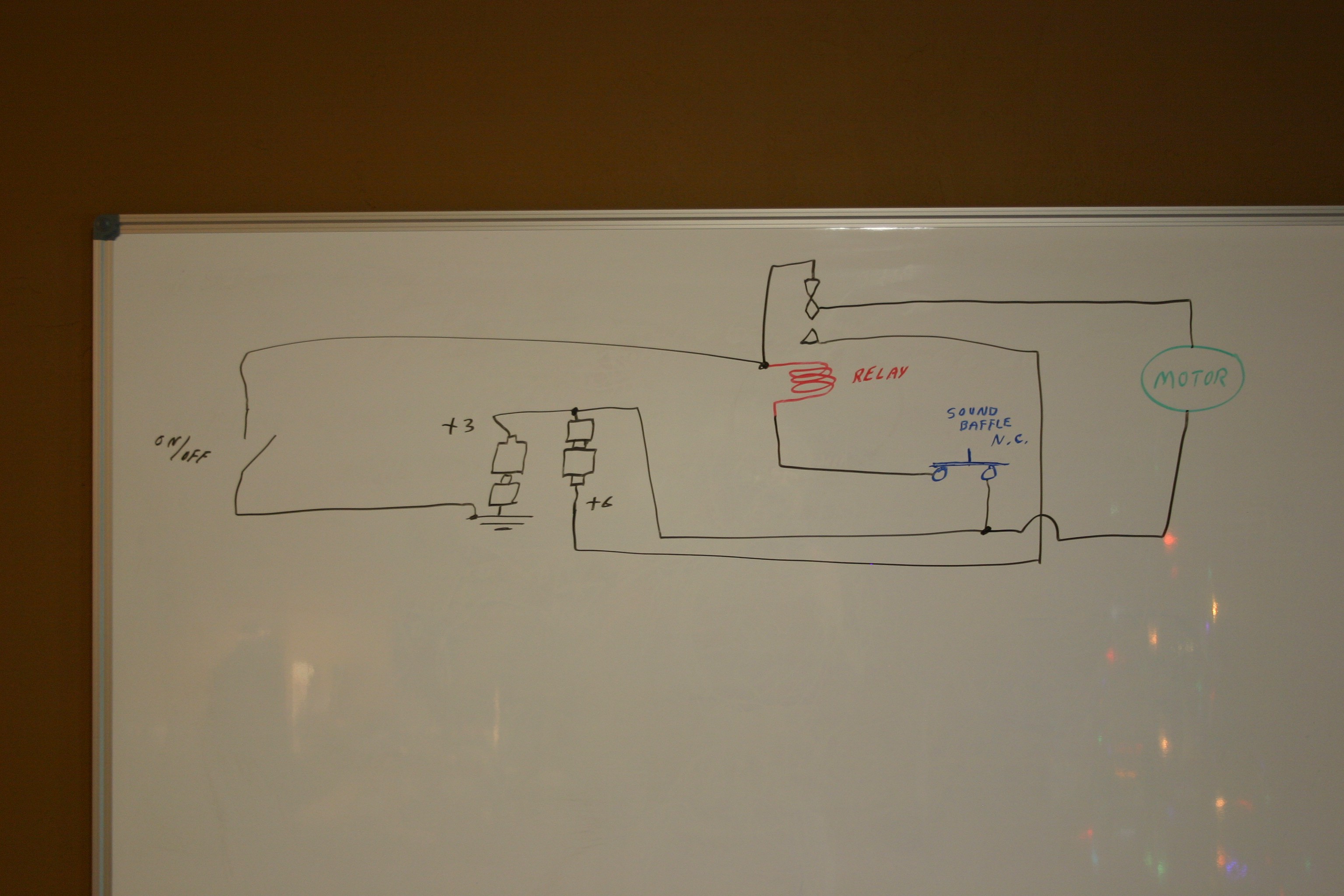
This clever arrangement reverses the motor using a single pole double throw relay. The battery bank is split into two parts, so the discharge is probably uneven. When the motor is reversed, the wheel assembly can rotate (not stopped by the razor blade catch). The "non-drive wheel" is locked by a little flap, so it can only rotate in one direction.
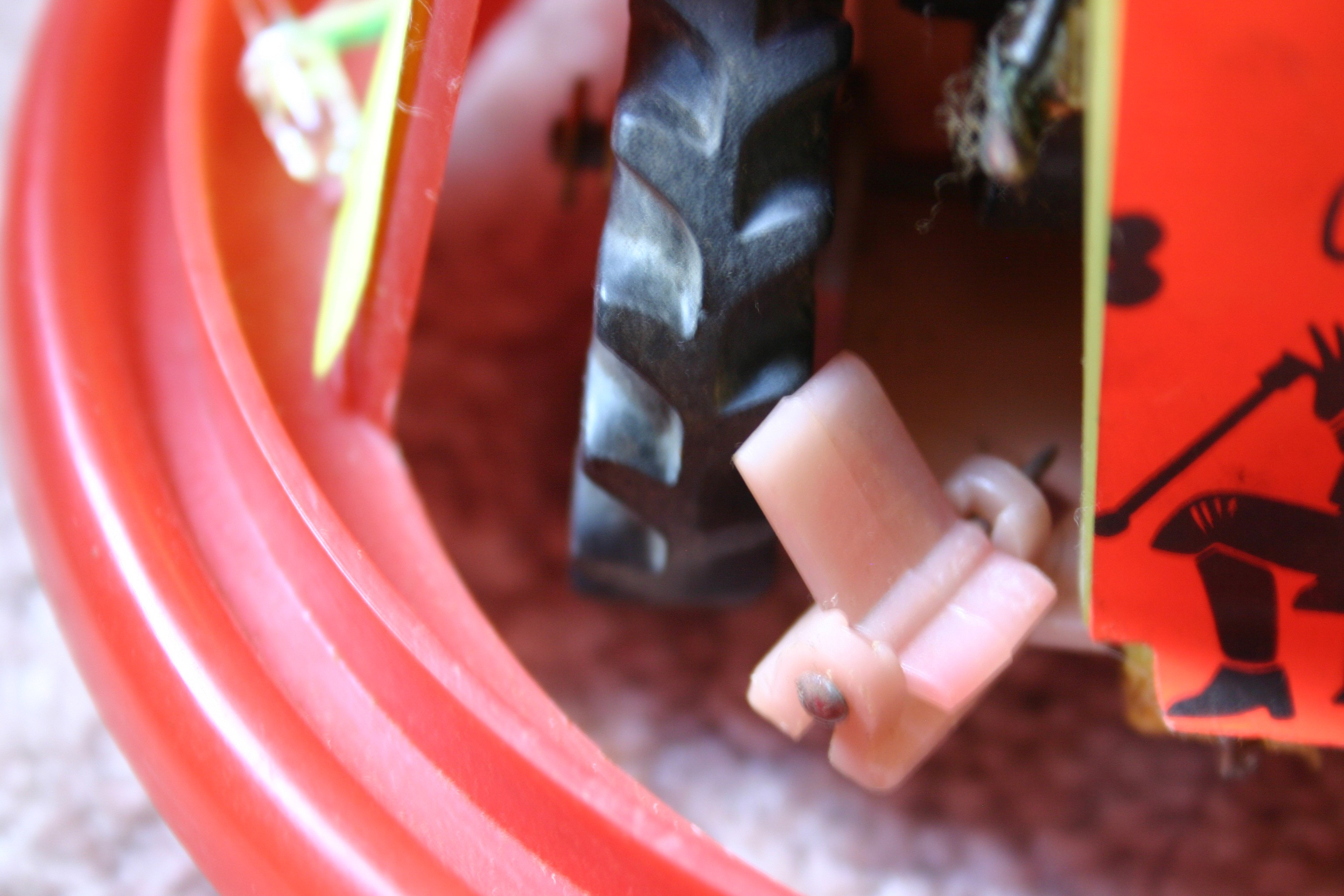
The large cylinder must resonate or somehow interact with the sound to cause the flap to move. I did not spend the extra $100. to get a unit with a whistle, so I have to guess a bit here. The two "points" are dark like carbon brushes, so I wonder if this arrangement is sort of a carbon microphone used to control the relay. I'm trying to simulate this, so I'll post the results in a few days.

Here's how the motor operates when given forward or reverse voltage.
The clear windshield was still clear and flexible.

Here's some of the instructions.
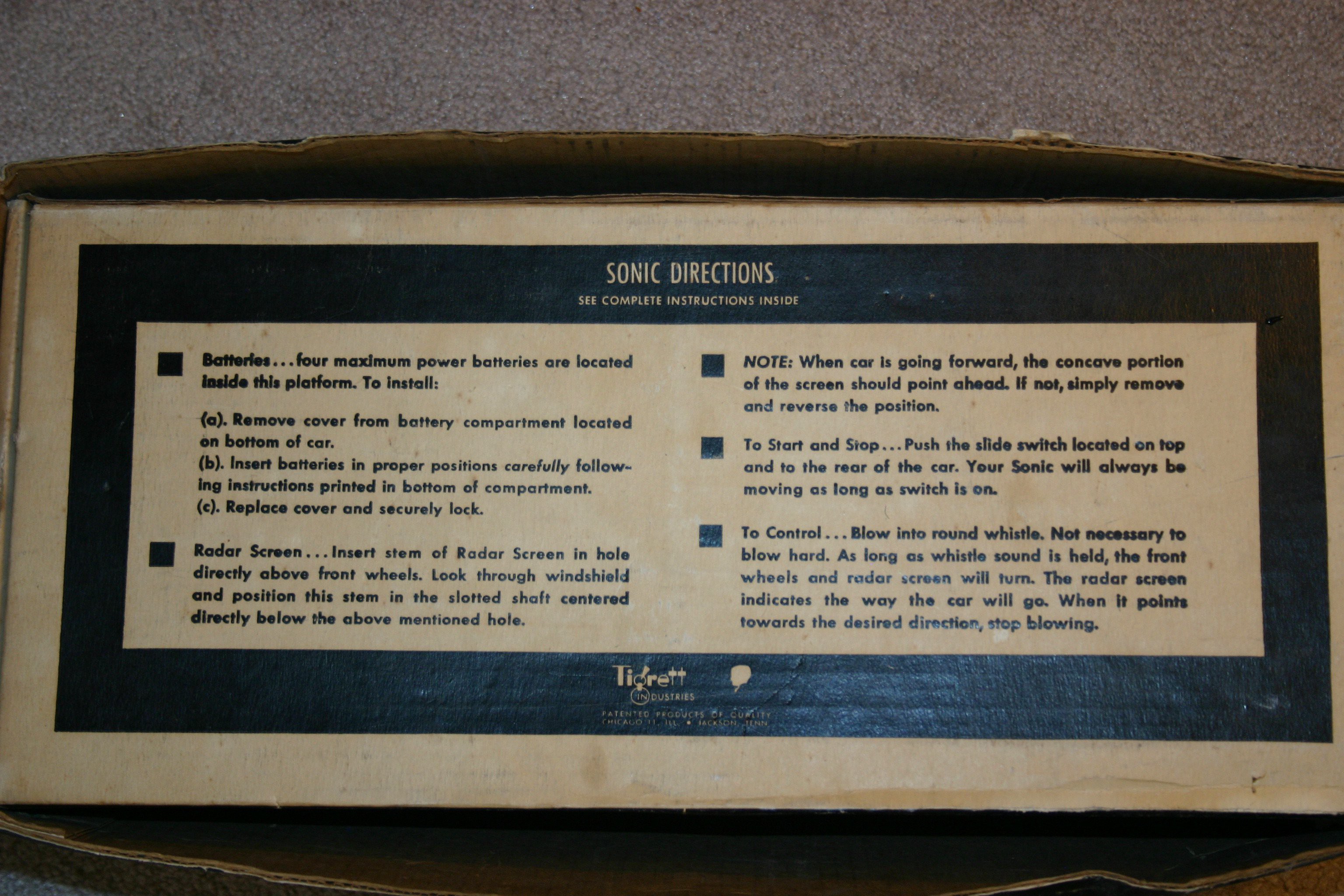
More box details.

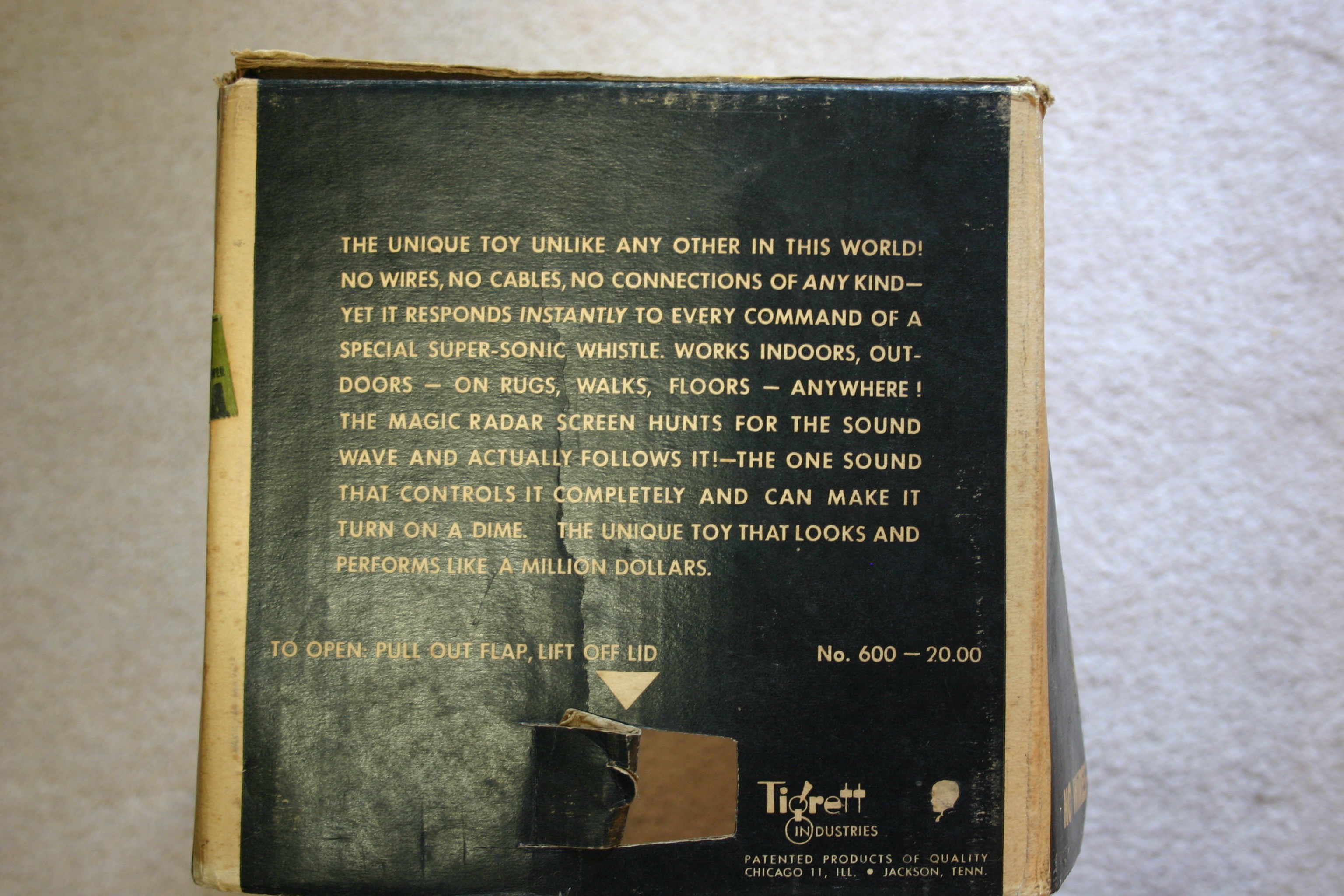
A plastic piece on the bottom of the motor assembly was broken, but I 3d printed a part and melted it in place to repair the unit.
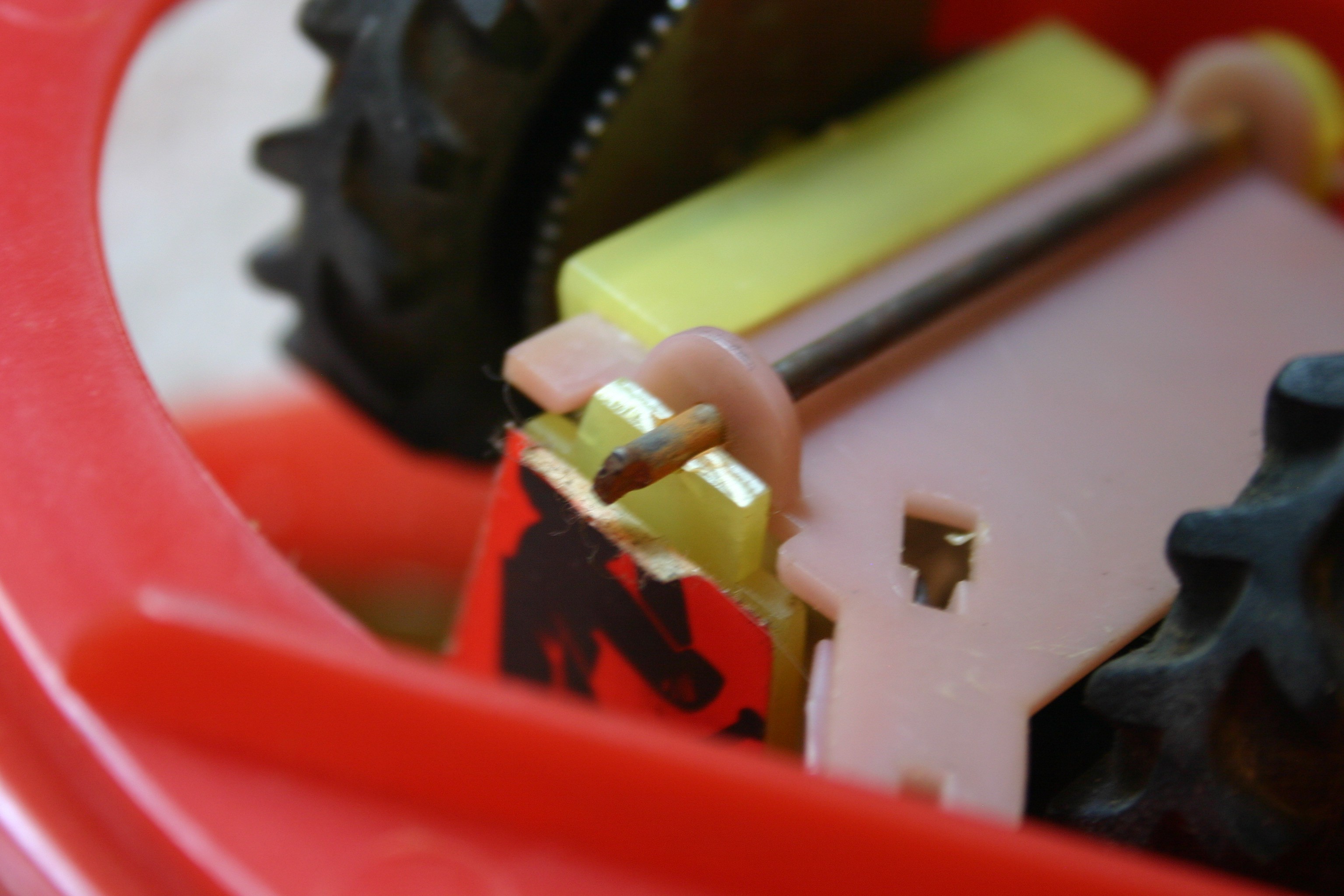
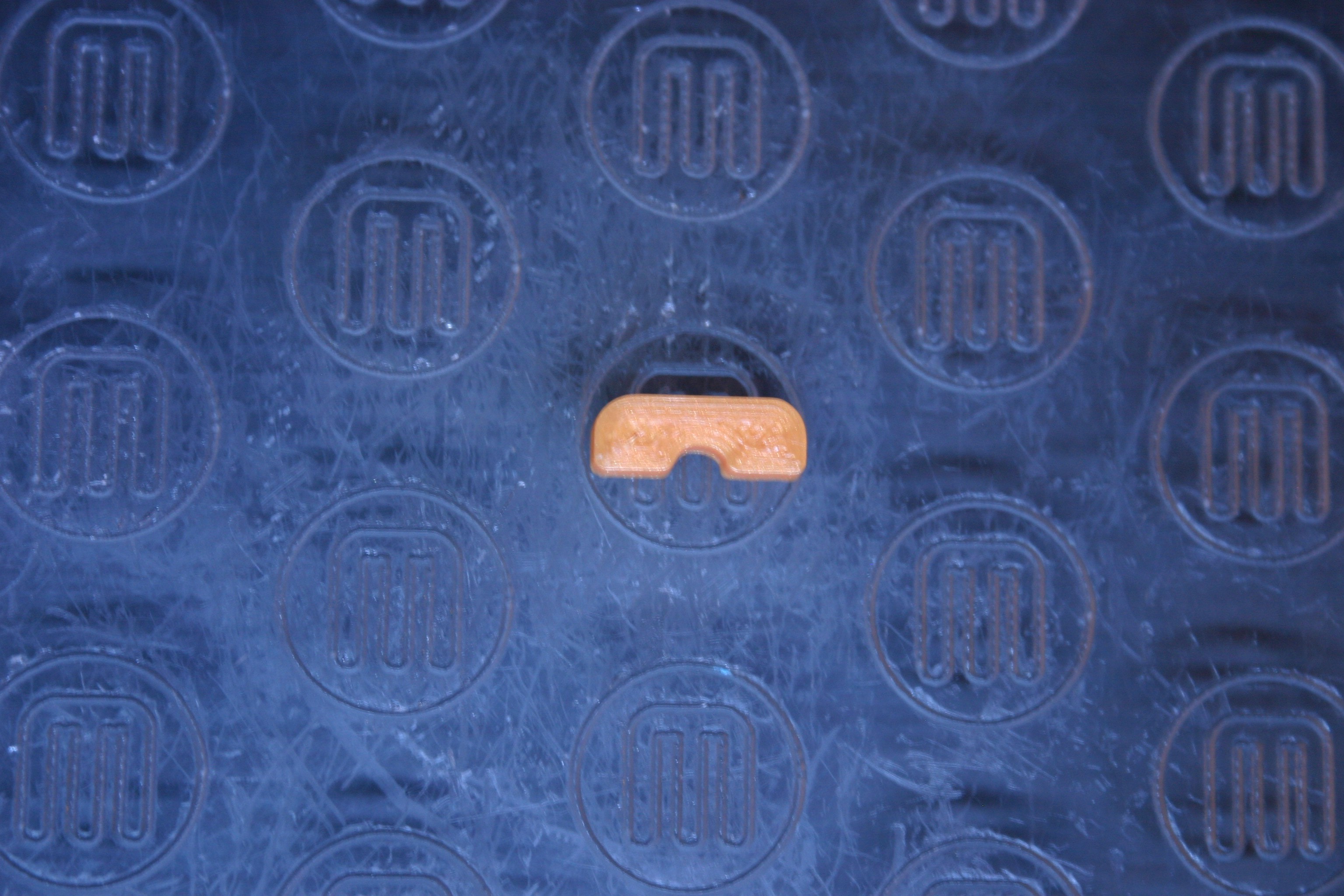
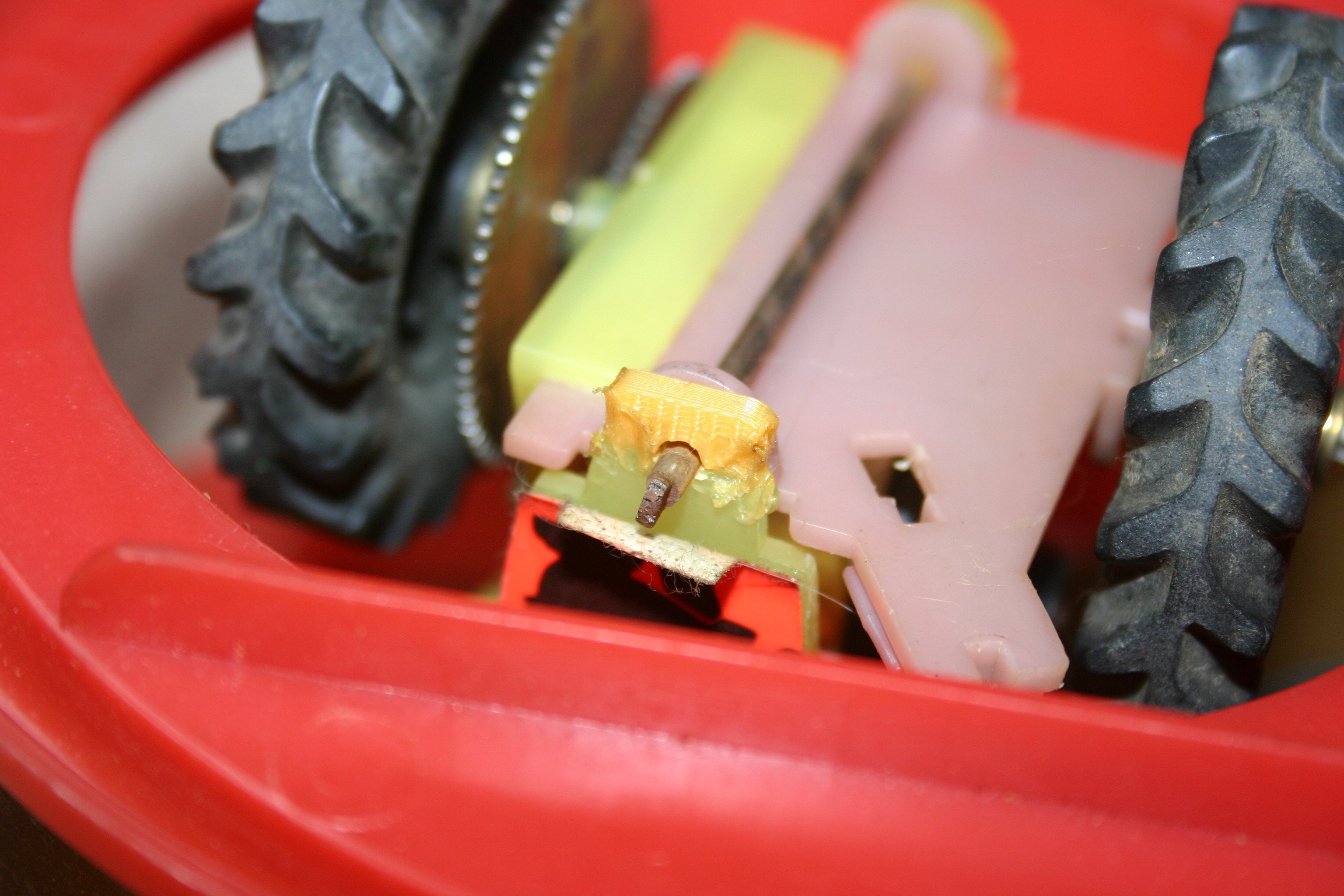
I also had to 3d print replacements for missing tail light covers.
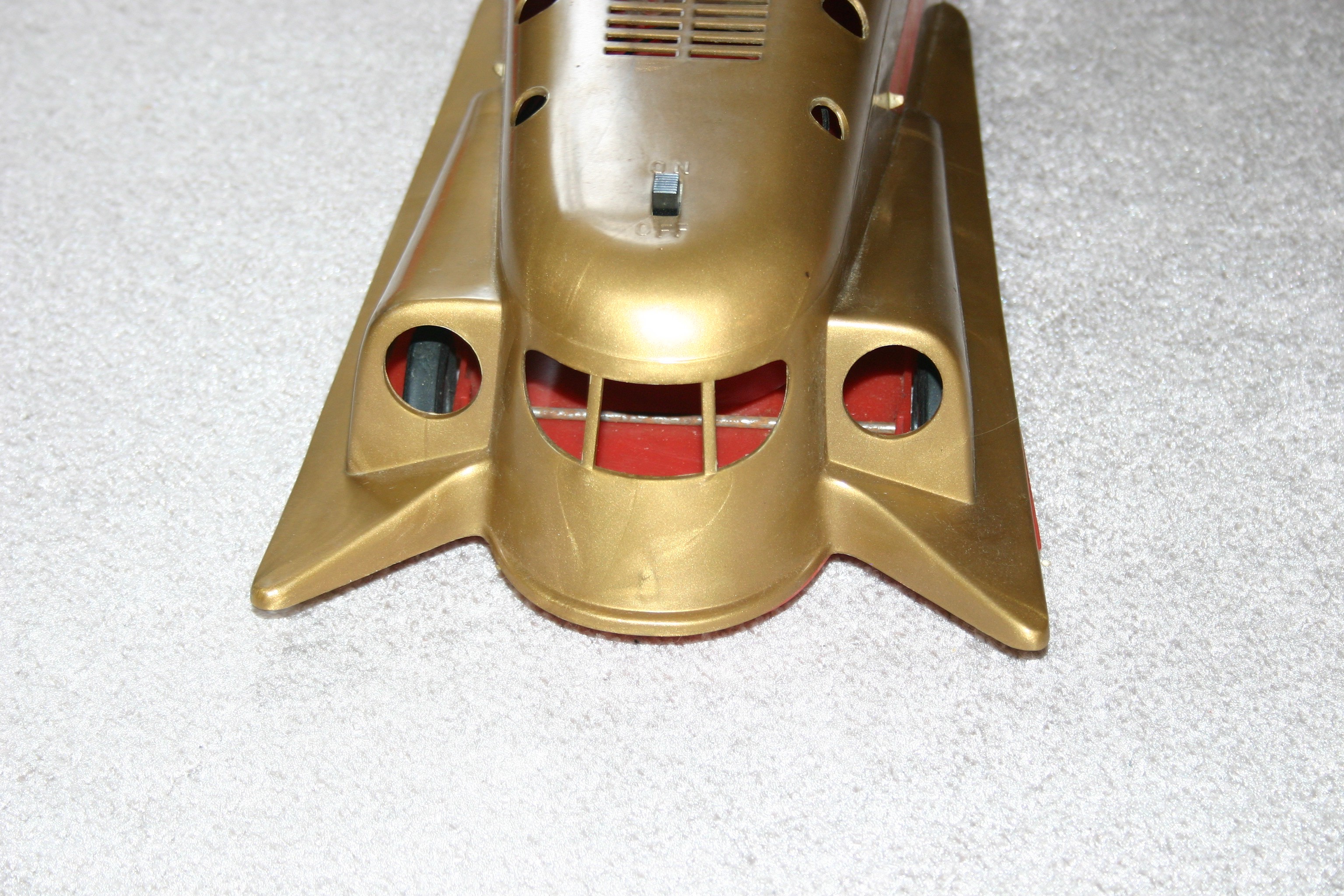
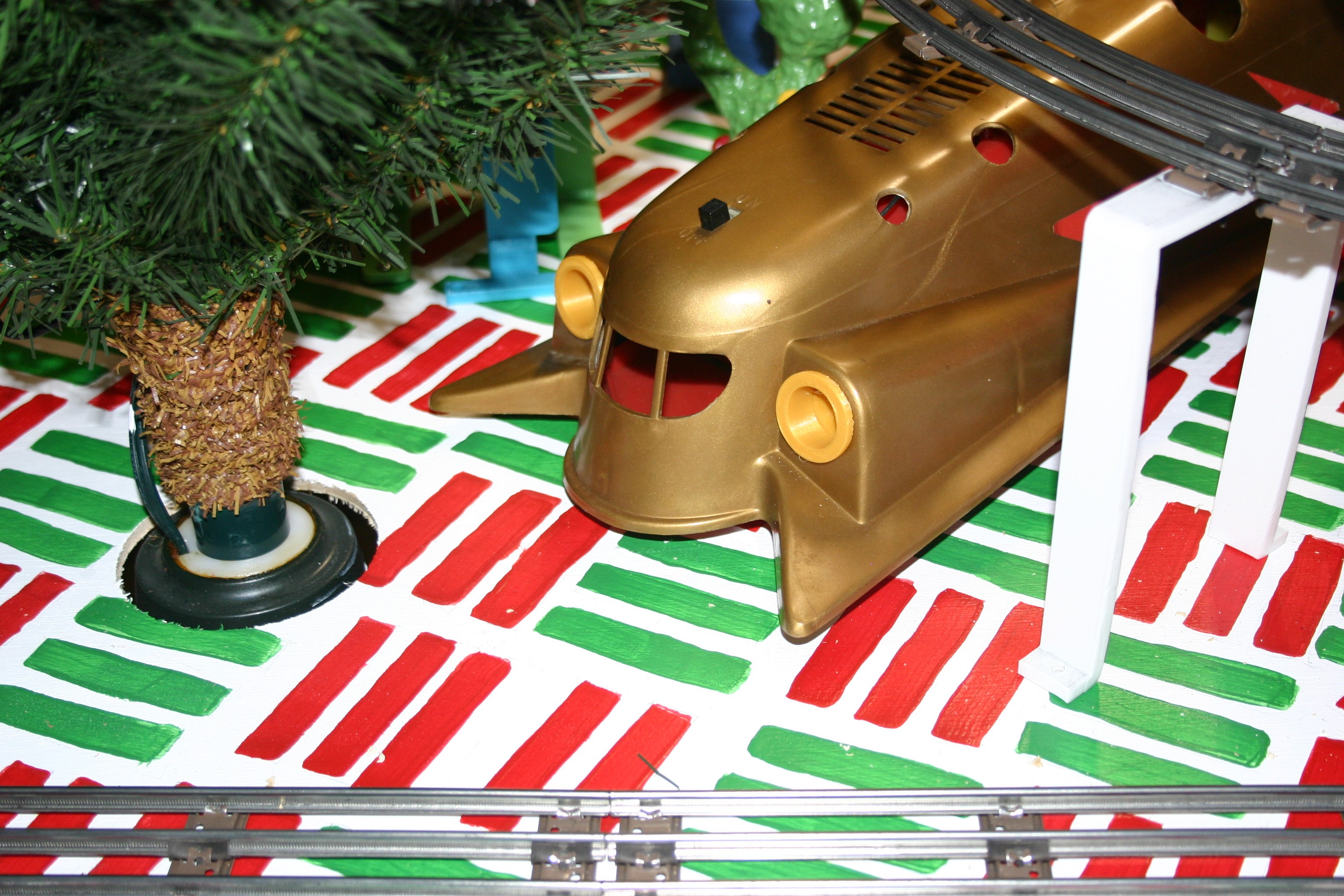
Because this is part of Santa's Shop, I wanted to automate the turning of the antenna and add a few lights inside the unit.
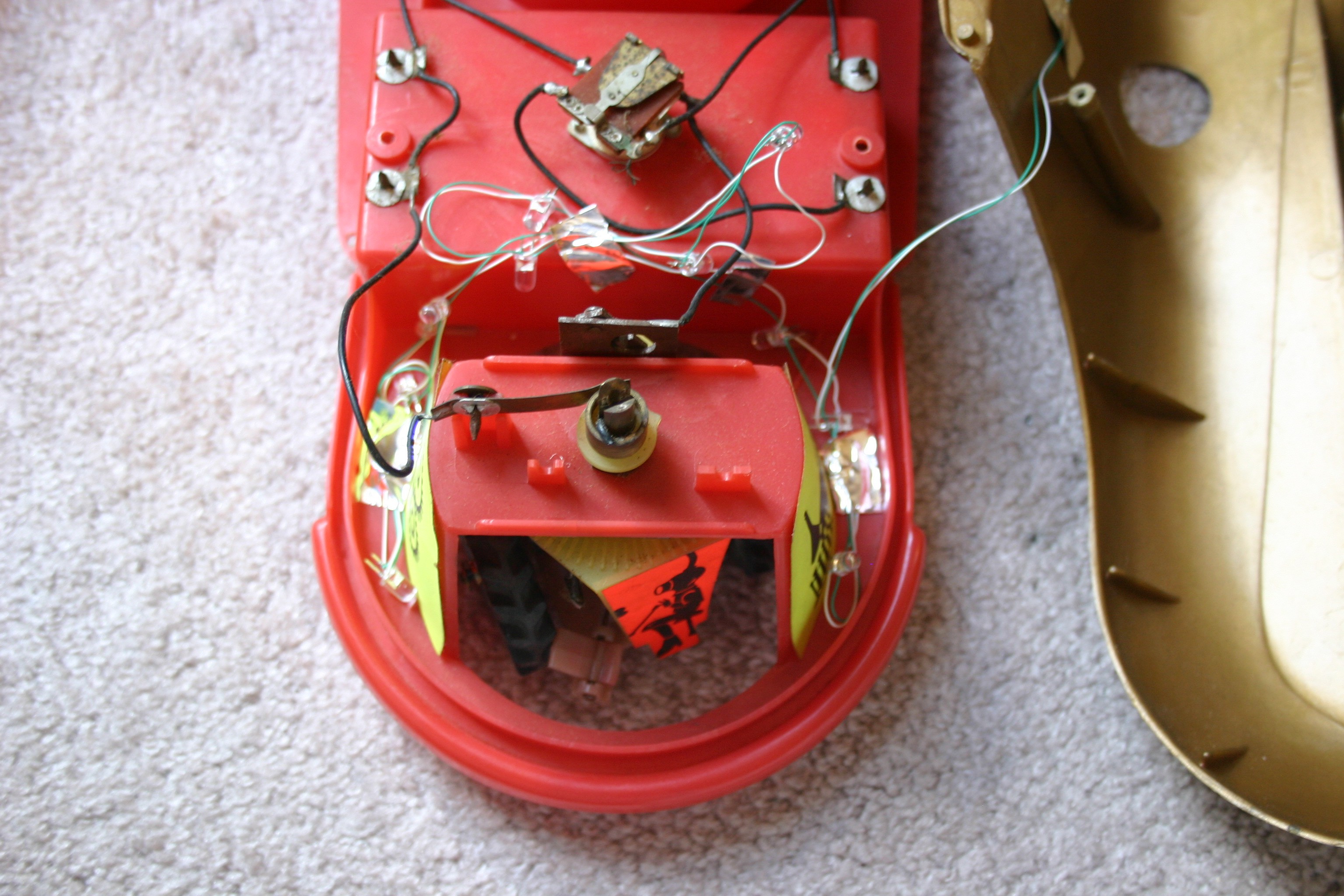
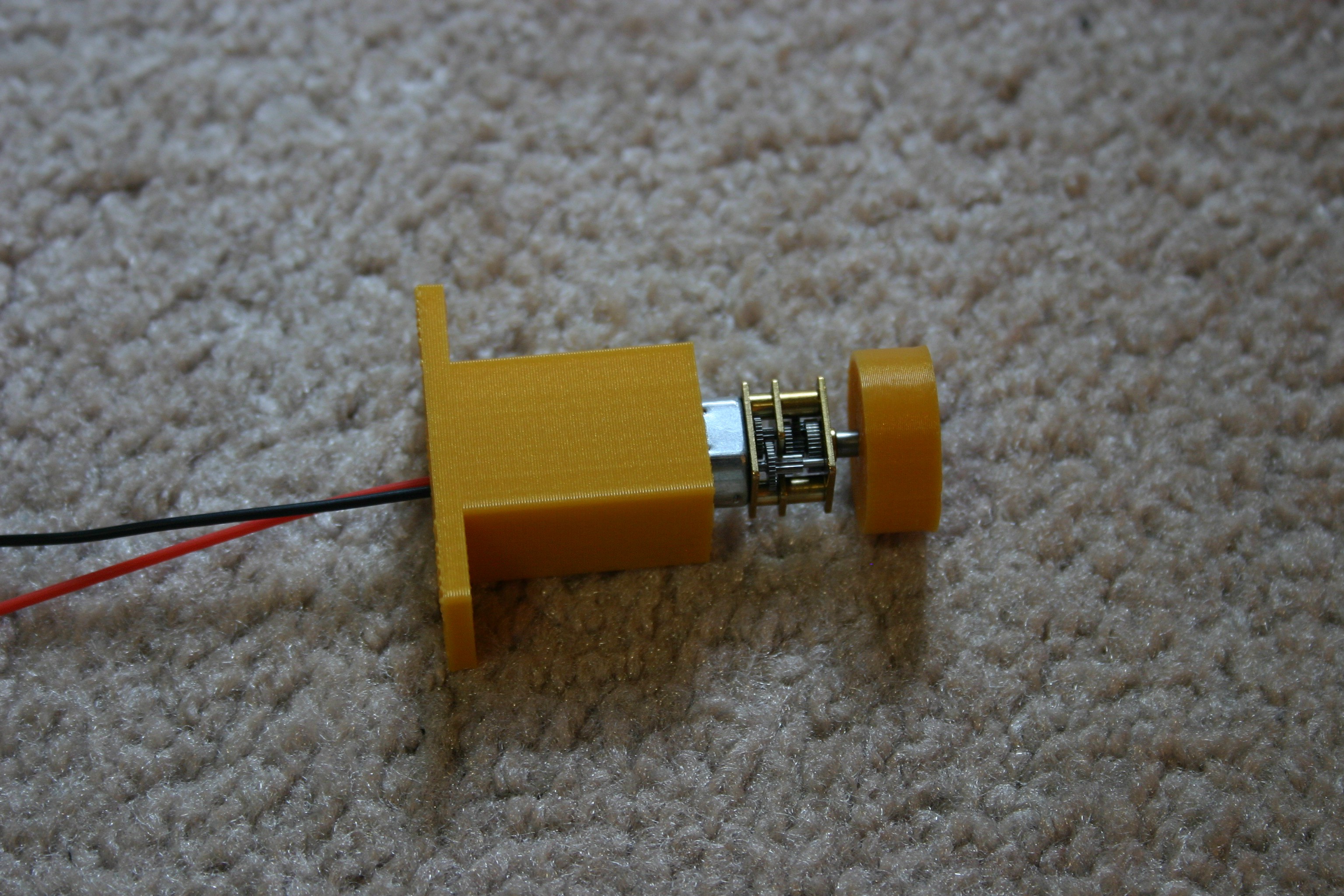
Of course, a couple of aliens had to be created (Annelle made these using polymer clay).

This guy came from a popular song back in the 50's--I'll let you guess who he is.

This is the ship and the passengers in the display.
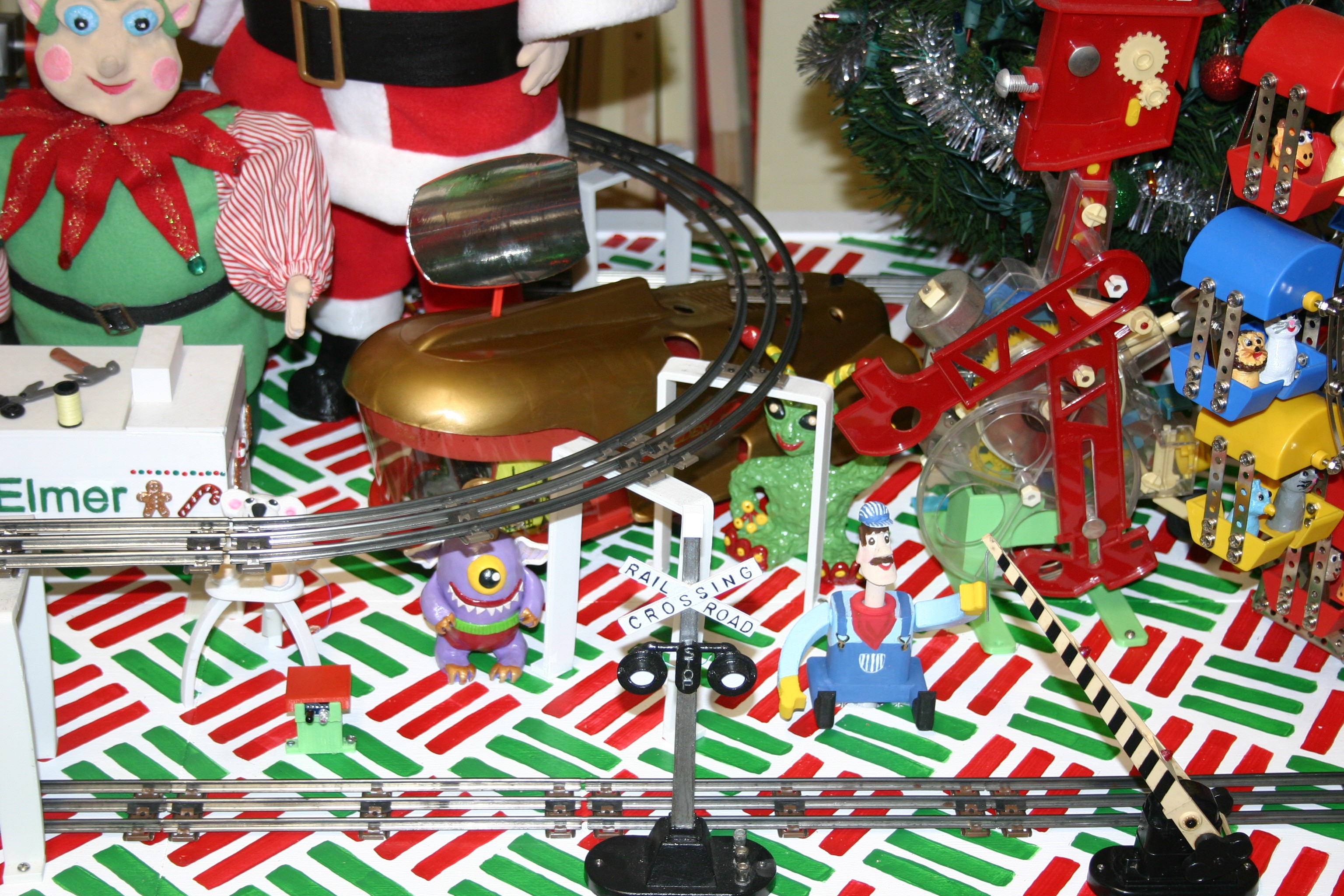
 Mike Rigsby
Mike Rigsby

What a great looking toy! Fascinating how they managed to control it with nothing in the way of electronics. Thanks for sharing this!